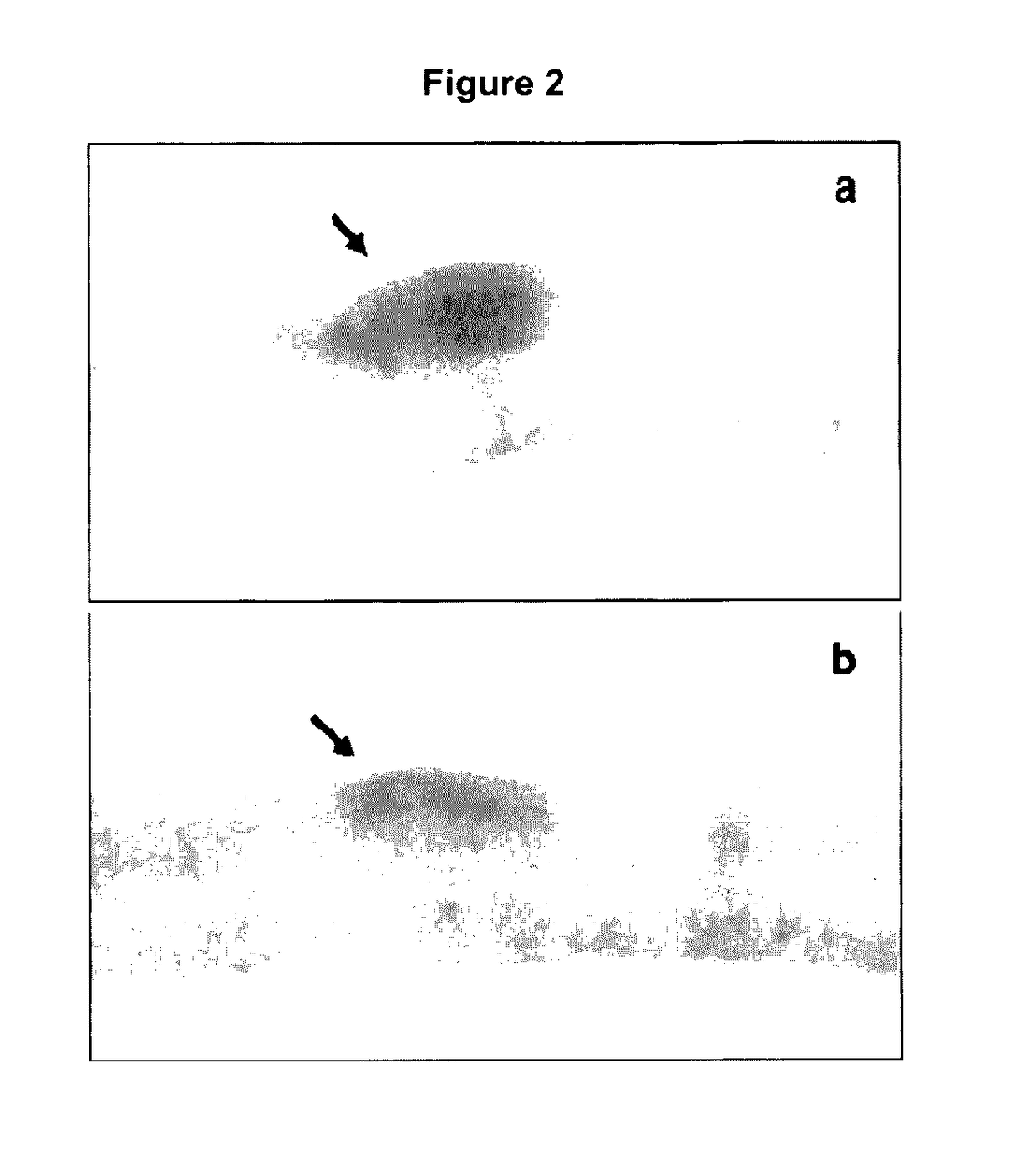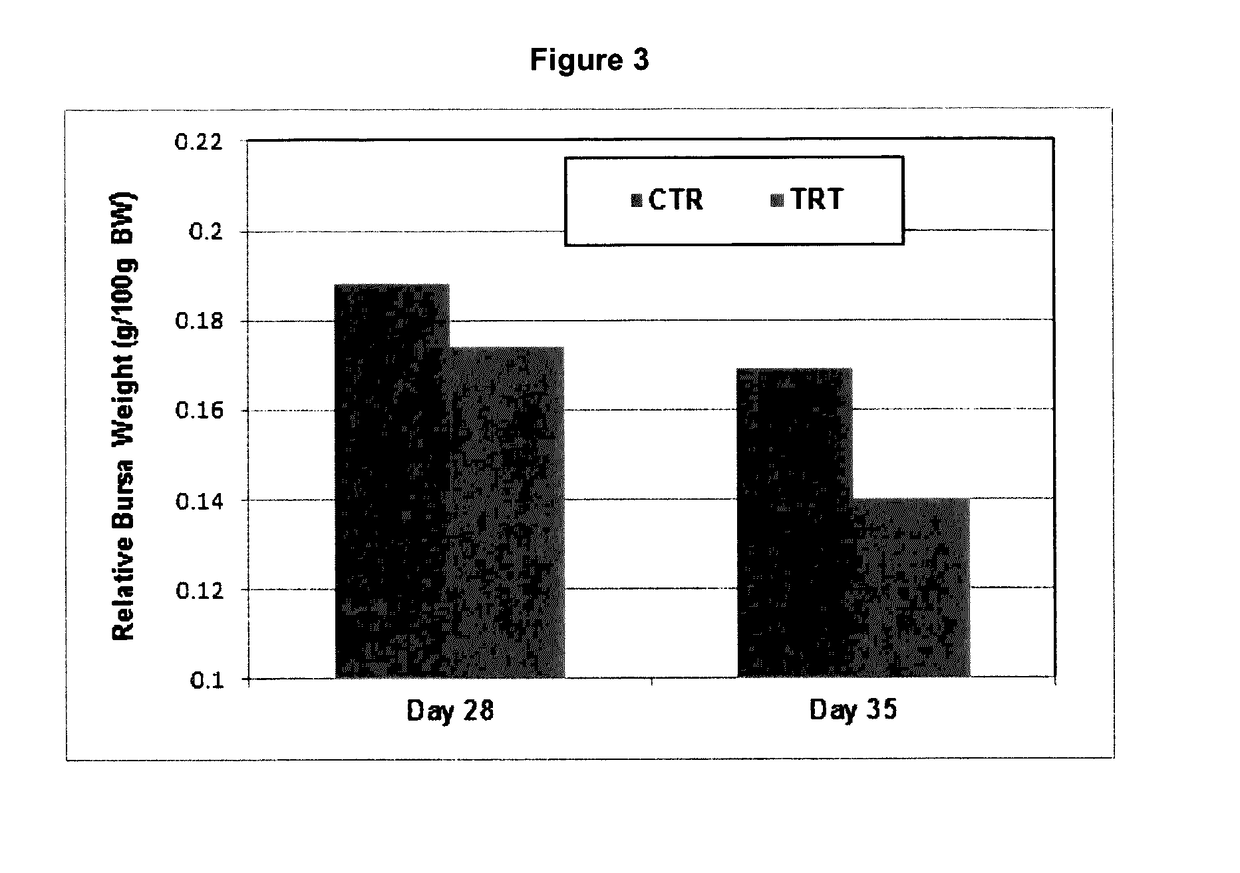Use of cyclic peptides from flaxseed for improving animal and human health
a technology of cyclic peptides and flaxseed, which is applied in the field of use of cyclic peptides from flaxseed for improving animal and human health, can solve the problems of process not allowing separation and isolation of hydrophobic peptides, laborious isolation of individual lcps, etc., and achieves the effects of reducing tissue incidence, reducing enteritis, and reducing the incidence of incidents
- Summary
- Abstract
- Description
- Claims
- Application Information
AI Technical Summary
Benefits of technology
Problems solved by technology
Method used
Image
Examples
example 1
Extraction of CLP's from Flaxseed
[0086]The mixture of cyclic peptides for the present in vivo and in vitro experiments was obtained from commercially available flaxseed oil using known methods of extraction. Therefore, flax oil was mixed with a suitable adsorbent having strong affinity for hydrophobic peptides from the oil. Note: several adsorbents with different chemistry are commercially available, and can be used for this purpose. In the present example, the adsorbent was silica. The absorbed peptides were then eluted from the adsorbent medium using a polar solvent, for example a solvent with a polarity similar to ethyl acetate or 10% ethanol in chloroform. Note; In addition to these solvents, many other solvents and their combinations with similar polarity characteristics can be used for this purpose. The solvent was removed and the residue dried.
example 2
Linus Cyclopeptide-Amended Diets
[0087]One hundred broiler chicks (7 days old) were given feed amended with an LCP extract from flaxseed. The poultry feed was purchased from Federated Co-Operatives Limited. The LCP extract was homogenized and was then incorporated into the feed at a concentration of 0.2% (wlw) of total peptide and was used throughout the feeding trials.
[0088]The in vivo trial was conducted using the chicken as a model subject. From a pool of 200 day old commercial broiler chicks, 50 chicks were randomly allocated to a control group and 100 chicks were randomly allocated to a treatment group, Basal diet was un-medicated commercial broiler chicken diet formulated to fulfill the nutritional requirements of broiler chickens. The control group was offered the basal diet, whereas the treatment group was offered the basal diet amended with an LCP extract at an amount of 2 g per kg. Feed and water were provided ad libitum.
[0089]A standard experimental protocol included daily...
example 3
Evaluation of Anti Coccidial Activity
[0125]In this trial, a study focused on isolation of coccidian oocysts was conducted. Faecal matter samples collected from pens housing control and treated groups were screened for Coccidian oocysts according to standard techniques used in parasitological procedures for isolation of identification of parasite eggs and oocysts. This technique is based on the principle that parasite eggs and oocysts, being less dense than a flotation solution with a high specific gravity, will rise to the top of the media.
[0126]Eimeria spp. oocysts were found at law concentration of approximately 20 oocysts per gram of litter in samples collected from the pen housing birds fed control diet. There were no coccidia oocysts in the faecal samples collected from the pen housing broiler chickens fed a diet supplemented with an extract of LCP from flaxseed.
PUM
| Property | Measurement | Unit |
|---|---|---|
| exposure time | aaaaa | aaaaa |
| concentration | aaaaa | aaaaa |
| body weight | aaaaa | aaaaa |
Abstract
Description
Claims
Application Information
 Login to View More
Login to View More - R&D
- Intellectual Property
- Life Sciences
- Materials
- Tech Scout
- Unparalleled Data Quality
- Higher Quality Content
- 60% Fewer Hallucinations
Browse by: Latest US Patents, China's latest patents, Technical Efficacy Thesaurus, Application Domain, Technology Topic, Popular Technical Reports.
© 2025 PatSnap. All rights reserved.Legal|Privacy policy|Modern Slavery Act Transparency Statement|Sitemap|About US| Contact US: help@patsnap.com



